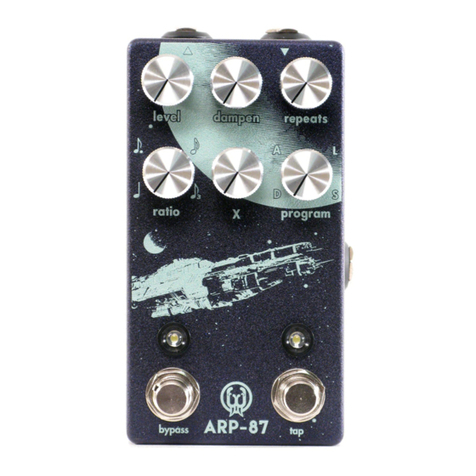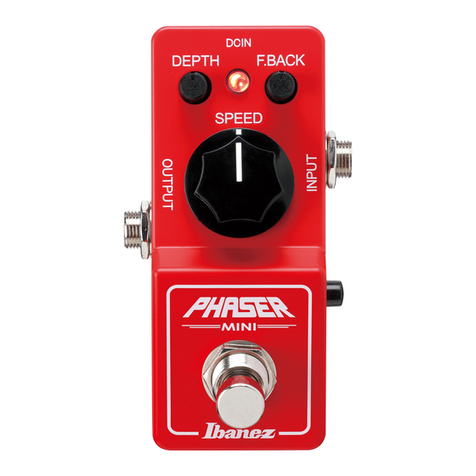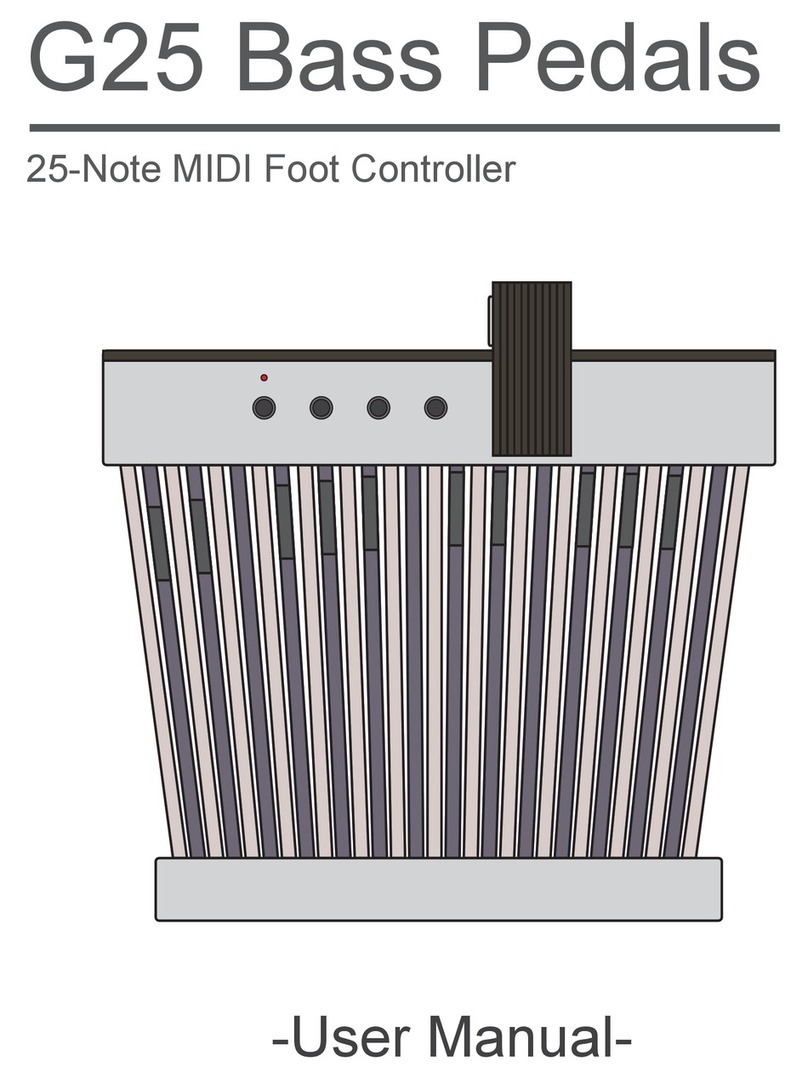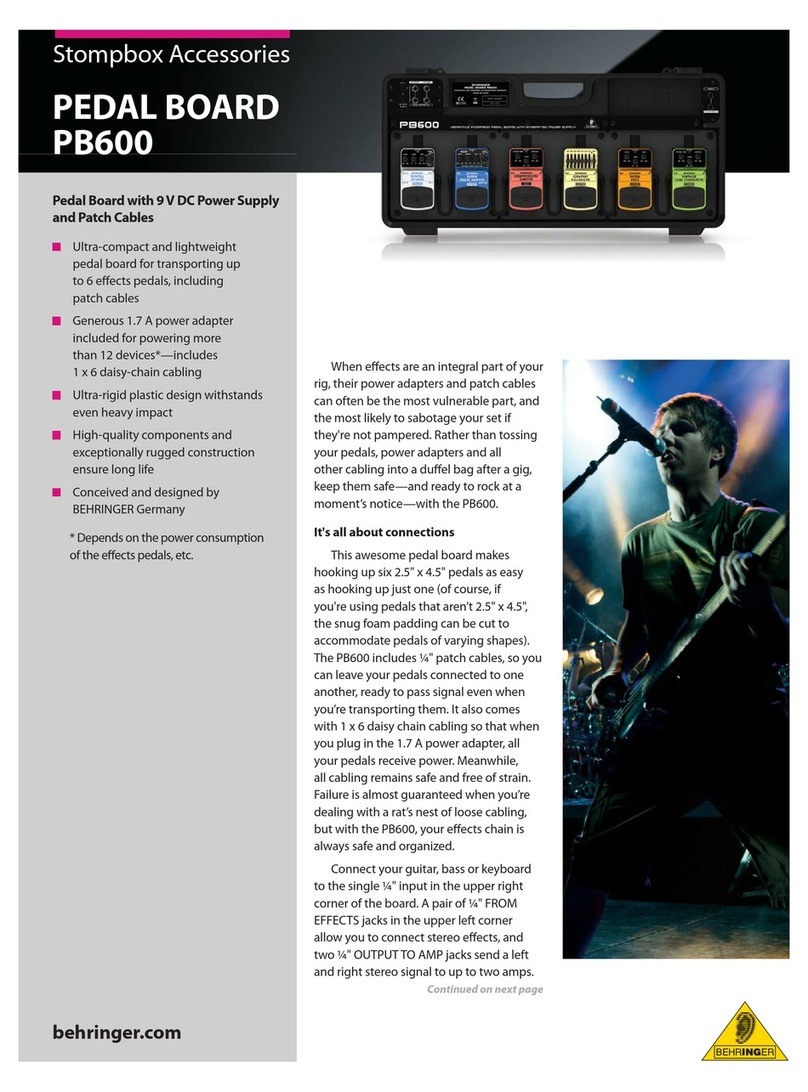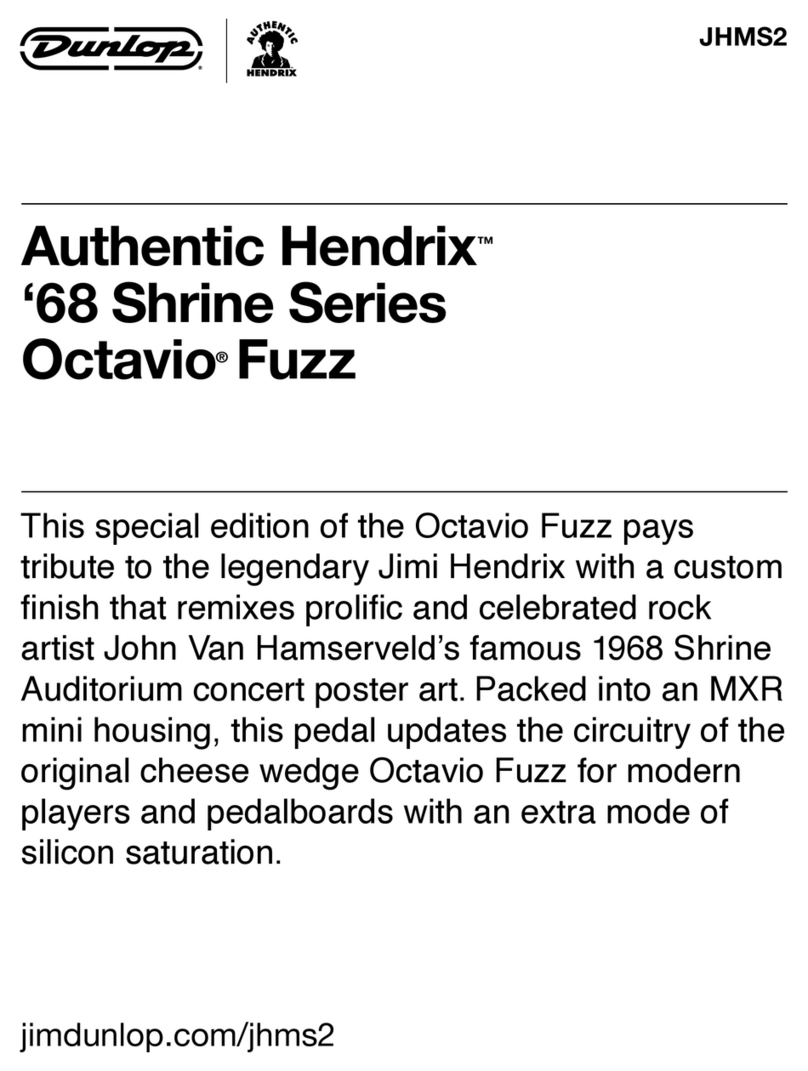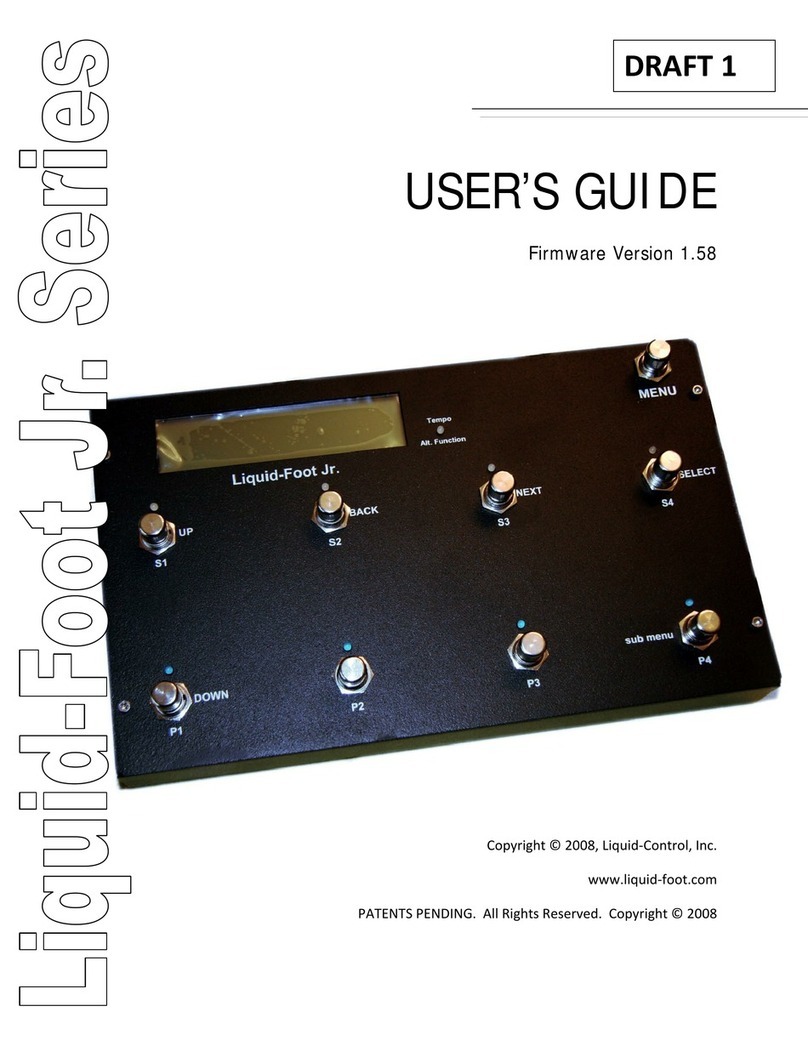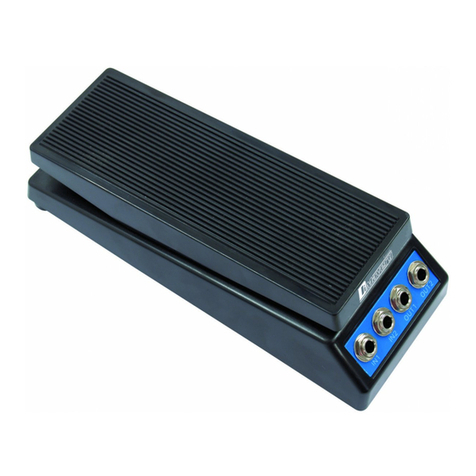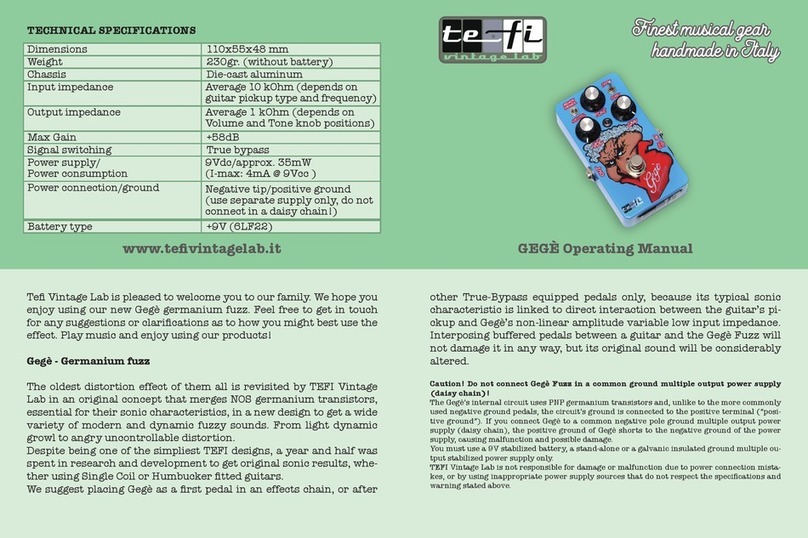SiriusLab Electronics RFM Guitar pedal 1 User manual

RFM Guitar pedal 1
User guide for North American market
Thank you for purchasing RFM Guitar Pedal 1.
To fully understand the working principles of operation, please carefully read the
user guide.
This device is designed to comply with UK and EU Band II LPD directive.
This is in essence similar to FCC’s Part 15 rules on Unlicensed extreme low power
devices.
It is strictly prohibited to cause disruption on the FM radio broadcasting
frequencies. Always check that the frequency used is not occupied by any
other radio station.
SiriusLab Electronics does not accept any liability for misuse of the radio
equipment and/or any damage caused by doing so.
With this out of the way, let’s dive into the manual!

SiriusLab Electronics RFM Guitar Pedal 1 User Guide v1.0
1. Basics
This distortion effects processor is intended to be primarily used with an electric
guitar but might be used with other instruments as well.
It has a simple user interface with a rotary encoder with a push button and LED’s.
The device has an integrated FM radio transmitter and a detachable SMA antenna
which connects to the RF OUT jack.
It has an integrated rechargeable Lithium-Ion battery.
Guitar or other suitable instrument is plugged in the AUDIO IN jack.
AUX IN jack is intended for connecting a line level audio source like a computer,
MP3 player or similar or a mobile phone.
AUDIO OUT jack is a standard guitar level output that can be used for daisy
chaining to other effects processors or for a guitar amplifier.
AUX OUT jack can be used for driving headphones or as a stereo line level audio
output for stereos and HiFi systems.
To charge the device, connect a suitable power source with voltages from 5 to 9
volts using a 2.1mm barrel plug with centre positive pin to the 5-9VDC jack.
The device comes with the battery discharged so it is first necessary to charge it.
It may be used while charging.
2. Turning the device ON and OFF
To turn the device ON, simply press and hold the rotary encoder for 3 seconds
until the LED’s light up.
Make sure the battery has enough charge.
The STATUS LED is always on, and the other LED indicates the selected feature.
STATUS LED also indicates the battery status and charging status.
To turn the device OFF, press and hold the rotary encoder for 3 seconds until the
LED’s turn OFF.
3. Navigating the menu
To change the selection, just press the rotary encoder button briefly and the LED
will change its position. The LED changes its position in an anti-clockwise manner.
When the LED is on the selected feature, you can turn the rotary knob to change
the value.
Every time the rotary knob is turned and the value changes, the selected LED
blinks red colour briefly, signaling the value has changed. If the value has
reached its end position, the LED blinks red colour longer singalising the value
cannot be changed any further in that direction.
Some settings are not changeable in bypass mode to prevent them from
accidental change. Those are IN VOL.,DISTORTION, and FILTER.
4. Bypass switch

SiriusLab Electronics RFM Guitar Pedal 1 User Guide v1.0
Bypass switch is used to change between the clean signal passing through the
effects processor without any changes and signal passing through the effects
processor input volume stage, distortion and filter stages.
To indicate that the device is in bypass mode, the STATUS LED is green and to
indicate it is not in bypass mode, the STATUS LED is blue.
5. Device charging
To charge the device use only a centre positive 2.1mm barrel jack that is 5 to 9
volts DC, rated to at least 300mA. This will ensure the battery charges fully in
roughly 5 hours.
While the device is charging, the STATUS LED will blink for half a second every 4
seconds indicating that the battery is charging. When the LED stops blinking, the
battery is charged fully.
It is advisable to remove the device from charging once the battery is fully
charged to prolong the battery life, but is not necessary.
When the battery loses its charge, the STATUS LED will blink briefly (100 ms) every
4 seconds indicating that the device should be charged.
Provided with the device is a 1 metre long charging cable intended to be used
with any USB port capable of delivering 500mA. This can be a computer, laptop
or any 5V USB universal charger or phone charger capable of delivering at least
500mA.
If unsure, please use only the provided USB to 2.1mm DC jack to charge this
device.
6. FM radio transmitter
This device is equipped with an FM radio transmitter and is supplied with a
removable SMA antenna.
It is designed to operate on FM radio frequencies from 87.9 MHz to 107.9 MHz. The
channels are skipped in 0.2 Mhz increments. For example if you are on frequency
98.7 MHz, nex frequency up is 98.9 MHz and the frequency down is 98.5 MHz. This
is in line with the USA and other North American countries channel allocation
frequencies.
It is strictly prohibited to cause disruption on the FM radio broadcasting
frequencies. Always check that the frequency used is not occupied by any other
radio station. This will also ensure maximum audio signal quality.

SiriusLab Electronics RFM Guitar Pedal 1 User Guide v1.0
The transmitted signal is only intended to be used locally and therefore its output
power is strictly limited by relevant regulations.
Best performance is achieved inside of a room and a couple of meters max from
the receiving device.
Multiple devices can be tuned to the same frequency to achieve more fun.
The receivers can be anything from a home HiFi system, boom box, mobile phone
or walkman, to a car.
To find the transmitter on modern devices with automatic scanning, it is usually
best to set the transmitter on some frequency and then scan on the receiver until
the selected frequency is reached. This will be indicated by silence if nothing is
plugged to the inputs. If an instrument is connected, it will be heard over the
radio receiver.
The default frequency is 87.9 MHz.
While the device is ON, the transmitter is operating. To stop the audio being
transmitted, just unscrew the antenna and store it for later usage.
It is advisable to put the supplied red cap on the SMA connector to prevent it
from dirt ingress and damage.
7. IN VOL. LED (input volume)
IN VOL. setting is intended to adjust the balance of the wet and dry signals.
This is used in order to match the bypassed loudness to the non bypassed
loudness. Depending on the preference, one can be louder than the other.
This setting can only be changed while the device is not in bypass mode, that is,
when the STATUS LED is blue.
8. IN CLIP LED (input clipping)
IN CLIP LED signalises the input level. While the input level is moderate, the IN
CLIP LED lights up green. When the input level is too high, the IN CLIP LED blinks
red.
If the input is driven too hard, there will be unwanted distortion and in extreme
cases, damage to the front end amplifier might occur.
If the IN CLIP LED is more red then green, please adjust the volume of the
instrument. Small amounts of red indication is perfectly acceptable.

SiriusLab Electronics RFM Guitar Pedal 1 User Guide v1.0
9. OUT VOL. (output volume)
OUT VOL. setting is intended to change the output volume. This is most useful
when using headphones so that it is possible to adjust the loudness according to
the users preference. This affects both AUDIO OUT and AUX OUT jacks.
10. OUT CLIP (output clipping)
Similarly to IN CLIP,OUT CLIP LED indicates the output level. If the level is
moderate, the OUT CLIP LED lights up green. When the output level is too high,
the OUT CLIP LED blinks red.
If the output is driven too hard, there will be unwanted distortion.
Small amounts of red indication is perfectly acceptable.
11. DISTORTION
The DISTORTION setting is used to change the gain of the distortion circuit. The
higher the gain, the more distorted audio becomes.
This device uses a pair of specially selected Schottky diodes and a matching
network to achieve its unique sound.
This setting is only accessible while the device is not in bypass mode - STATUS
LED blue. This is to prevent accidental changes while in bypass mode.
12. FILTER (tone control)
This device is equipped with an active second order low pass Butterworth filter. To
change the cut off frequency turn the rotary knob while the selected mode is on
FILTER. This setting also cannot be changed while the device is in bypass mode to
prevent accidental changes.
13. FM FREQ. (FM frequency)
FM FREQ. setting is for changing the transmitter frequency. Turn the rotary knob
clockwise (MORE) for higher frequency and anti-clockwise (LESS) for lower
frequency. Theory of operation is explained in Chapter 6.
Table of contents
